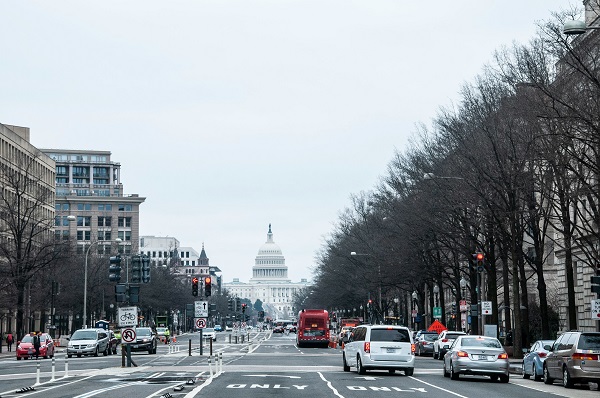Alberta
The Child Benefit You Got was Not an Error

The Child Benefit You Got was Not an Error
So a lot of people are wondering why money showed up for the Canada Child Benefit (CCB) yesterday (May 20) when they normally don’t qualify.
The CCB “one-time payment” for COVID-19 relief is actually formula driven but it is created by adding $3,600 for each additional child (not $300)… you’ll see in a minute why this is.
Step 1 – Add up the number of children that were under 6 years old in 2018 and multiply by $6,639.00
Step 2 – Add up the number of children that were between 6 and 17 years of age in 2018 and multiply by $5,602.00
This is your normal ANNUAL Canada Child Benefit entitlement before reductions.
However, for your May 2020 payment only, the formula adds $3,600 per child to bring the numbers to $10,239 and $9,202 per child based on age respectively.
If you have less than $31,120 of adjusted household income, you will get the full $300 extra, congrats, no more math for you.
For the rest of you it gets interesting or complicated, depending how you view math.
Any amount of adjusted household income between $31,120 and $67,426 causes your ANNUAL entitled CCB to be reduced by the following:
- 7% of the amount of household income if you have 1 child
- 13.5% of the amount of household income if you have 2 children
- 19% of the amount of household income if you have 3 children
- 23% of the amount of household income if you have 4 children or more
This is called the “first reduction”. The maximum amount of household income subject to the first reduction formula is $36,306 more than the base $31,120 (meaning an income of $65,976)
Those of you over this number, you are not done yet.
Any amount of adjusted household income over $67,426 causes your ANNUAL entitled CCB to be reduced by the following:
- 3.2% of the amount of household income if you have 1 child
- 5.7% of the amount of household income if you have 2 children
- 8% of the amount of household income if you have 3 children
- 9.5% of the amount of household income if you have 4 children or more
This is called the “second reduction”. There is no maximum amount of household income subject to the second reduction formula. You keep calculating until you hit zero.
For example. If you have one school-aged child in 2018, and your adjusted household income is $100,000 the formula would be this:
NORMAL MONTHLY BENEFIT:
- First reduction: 67,426-31,120 = $36,306 x 7% = $2,541.42
- Second reduction: 100,000-67,426 = $32,574 x 3.2% = $1,042.37
- 1 child: $5,602
- $5,602.00 minus $2,541.42 = $3,060.58 minus $1,042.37 = $2,018.21
- $2,978.21 divided by 12 = $168.18/month CCB as a Normal Benefit
COVID19 MAY 2020 BENEFIT:
- The first two reduction steps are the same but that 1 child is $3,600 more
- 1 child: $9,202
- $9,202.00 minus $2,541.42 = $6,660.58 minus $1,042.37 = $5,618.21
- $5,618.21 divided by 12 = $468.18/month CCB as a one-time Benefit (an extra $300 like promised)
So yes… an extra $300 per child for those already getting the benefit already… but for those that were not getting it before, but filed in 2018… and had an eligible child… the formula is recalculated with the $3,600 ($300 per month) change, and so many more households in Canada will be seeing some sort of amount.
For example, the lowest amount possible to collect would be with one school-aged child ($9,202 formula).
- Households that make up to $163,069 will receive the full $300 for this child.
- Households between $163,069 and $275,569 will receive less than $300 on a sliding scale from the Second reduction.
- Households over $275,569 in this scenario would receive zero.
So almost every household with eligible children in Canada will see something coming their way for the May benefit to help with the extra costs with no schools or dayhomes open.
Sincerely,
Your Friendly Neighbourhood Tax Nerds
CGL Strategic Business & Tax Advisors
CV of Cory G. Litzenberger, CPA, CMA, CFP, C.Mgr can be found here.
Alberta
Big win for Alberta and Canada: Statement from Premier Smith

Premier Danielle Smith issued the following statement on the April 2, 2025 U.S. tariff announcement:
“Today was an important win for Canada and Alberta, as it appears the United States has decided to uphold the majority of the free trade agreement (CUSMA) between our two nations. It also appears this will continue to be the case until after the Canadian federal election has concluded and the newly elected Canadian government is able to renegotiate CUSMA with the U.S. administration.
“This is precisely what I have been advocating for from the U.S. administration for months.
“It means that the majority of goods sold into the United States from Canada will have no tariffs applied to them, including zero per cent tariffs on energy, minerals, agricultural products, uranium, seafood, potash and host of other Canadian goods.
“There is still work to be done, of course. Unfortunately, tariffs previously announced by the United States on Canadian automobiles, steel and aluminum have not been removed. The efforts of premiers and the federal government should therefore shift towards removing or significantly reducing these remaining tariffs as we go forward and ensuring affected workers across Canada are generously supported until the situation is resolved.
“I again call on all involved in our national advocacy efforts to focus on diplomacy and persuasion while avoiding unnecessary escalation. Clearly, this strategy has been the most effective to this point.
“As it appears the worst of this tariff dispute is behind us (though there is still work to be done), it is my sincere hope that we, as Canadians, can abandon the disastrous policies that have made Canada vulnerable to and overly dependent on the United States, fast-track national resource corridors, get out of the way of provincial resource development and turn our country into an independent economic juggernaut and energy superpower.”
Alberta
Energy sector will fuel Alberta economy and Canada’s exports for many years to come

From the Fraser Institute
By any measure, Alberta is an energy powerhouse—within Canada, but also on a global scale. In 2023, it produced 85 per cent of Canada’s oil and three-fifths of the country’s natural gas. Most of Canada’s oil reserves are in Alberta, along with a majority of natural gas reserves. Alberta is the beating heart of the Canadian energy economy. And energy, in turn, accounts for one-quarter of Canada’s international exports.
Consider some key facts about the province’s energy landscape, as noted in the Alberta Energy Regulator’s (AER) 2023 annual report. Oil and natural gas production continued to rise (on a volume basis) in 2023, on the heels of steady increases over the preceding half decade. However, the dollar value of Alberta’s oil and gas production fell in 2023, as the surging prices recorded in 2022 following Russia’s invasion of Ukraine retreated. Capital spending in the province’s energy sector reached $30 billion in 2023, making it the leading driver of private-sector investment. And completion of the Trans Mountain pipeline expansion project has opened new offshore export avenues for Canada’s oil industry and should boost Alberta’s energy production and exports going forward.
In a world striving to address climate change, Alberta’s hydrocarbon-heavy energy sector faces challenges. At some point, the world may start to consume less oil and, later, less natural gas (in absolute terms). But such “peak” consumption hasn’t arrived yet, nor does it appear imminent. While the demand for certain refined petroleum products is trending down in some advanced economies, particularly in Europe, we should take a broader global perspective when assessing energy demand and supply trends.
Looking at the worldwide picture, Goldman Sachs’ 2024 global energy forecast predicts that “oil usage will increase through 2034” thanks to strong demand in emerging markets and growing production of petrochemicals that depend on oil as the principal feedstock. Global demand for natural gas (including LNG) will also continue to increase, particularly since natural gas is the least carbon-intensive fossil fuel and more of it is being traded in the form of liquefied natural gas (LNG).
Against this backdrop, there are reasons to be optimistic about the prospects for Alberta’s energy sector, particularly if the federal government dials back some of the economically destructive energy and climate policies adopted by the last government. According to the AER’s “base case” forecast, overall energy output will expand over the next 10 years. Oilsands output is projected to grow modestly; natural gas production will also rise, in part due to greater demand for Alberta’s upstream gas from LNG operators in British Columbia.
The AER’s forecast also points to a positive trajectory for capital spending across the province’s energy sector. The agency sees annual investment rising from almost $30 billion to $40 billion by 2033. Most of this takes place in the oil and gas industry, but “emerging” energy resources and projects aimed at climate mitigation are expected to represent a bigger slice of energy-related capital spending going forward.
Like many other oil and gas producing jurisdictions, Alberta must navigate the bumpy journey to a lower-carbon future. But the world is set to remain dependent on fossil fuels for decades to come. This suggests the energy sector will continue to underpin not only the Alberta economy but also Canada’s export portfolio for the foreseeable future.
-

 2025 Federal Election16 hours ago
2025 Federal Election16 hours agoPoilievre To Create ‘Canada First’ National Energy Corridor
-

 Automotive2 days ago
Automotive2 days agoAuto giant shuts down foreign plants as Trump moves to protect U.S. industry
-

 Energy2 days ago
Energy2 days agoTrump Takes More Action To Get Government Out Of LNG’s Way
-

 2025 Federal Election1 day ago
2025 Federal Election1 day agoMainstream Media Election Coverage: If the Election Was a NHL Game, the Ice Would be Constantly Tilted Up and to the Left
-

 International23 hours ago
International23 hours agoFREE MARINE LE PEN!’: Trump defends French populist against ‘lawfare’ charges
-

 Health2 days ago
Health2 days agoSelective reporting on measles outbreaks is a globalist smear campaign against Trump administration.
-

 2025 Federal Election1 day ago
2025 Federal Election1 day agoMark Carney is trying to market globalism as a ‘Canadian value.’ Will it work?
-

 2025 Federal Election2 days ago
2025 Federal Election2 days agoPoilievre promises to drop ‘radical political ideologies’ in universities









